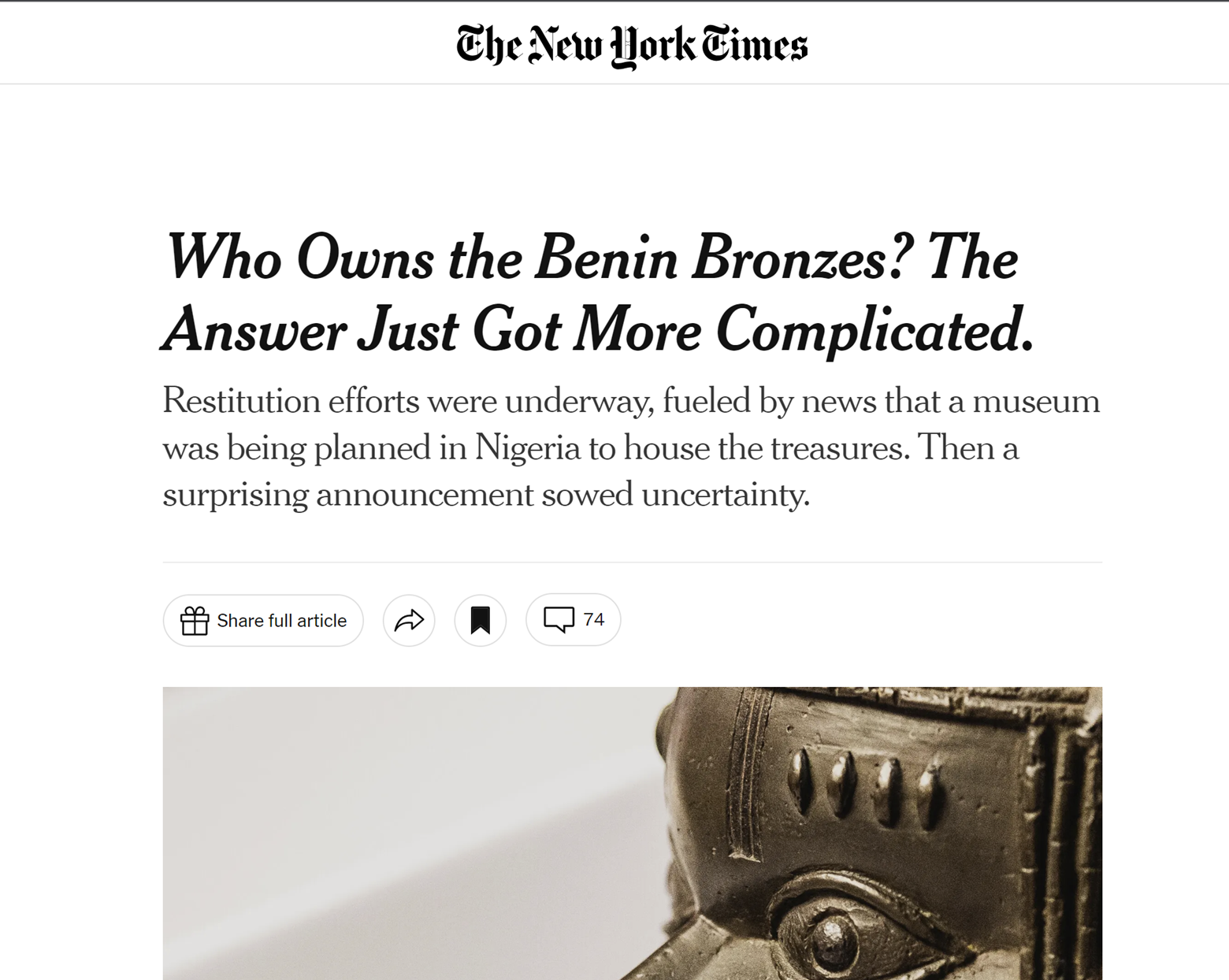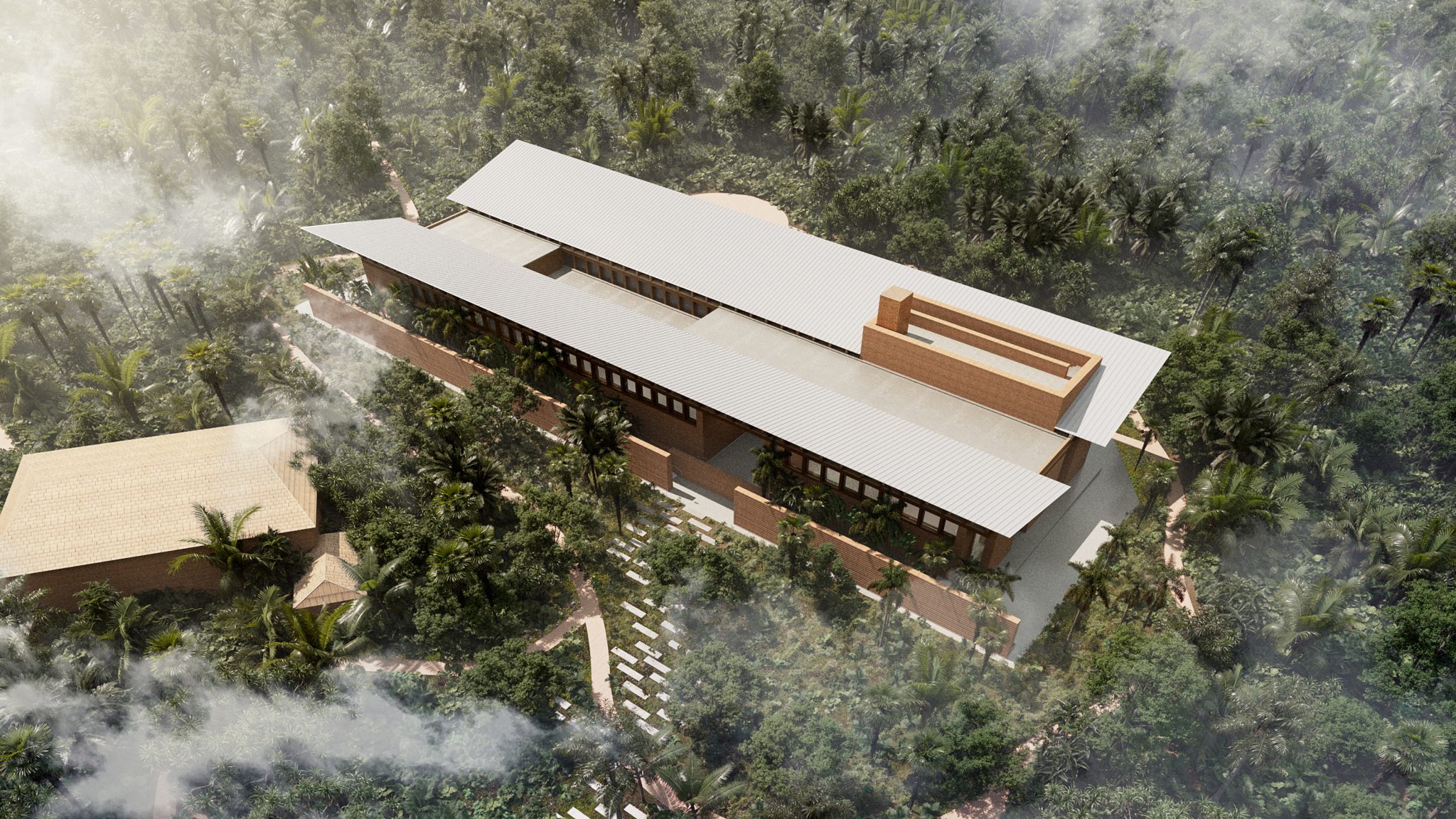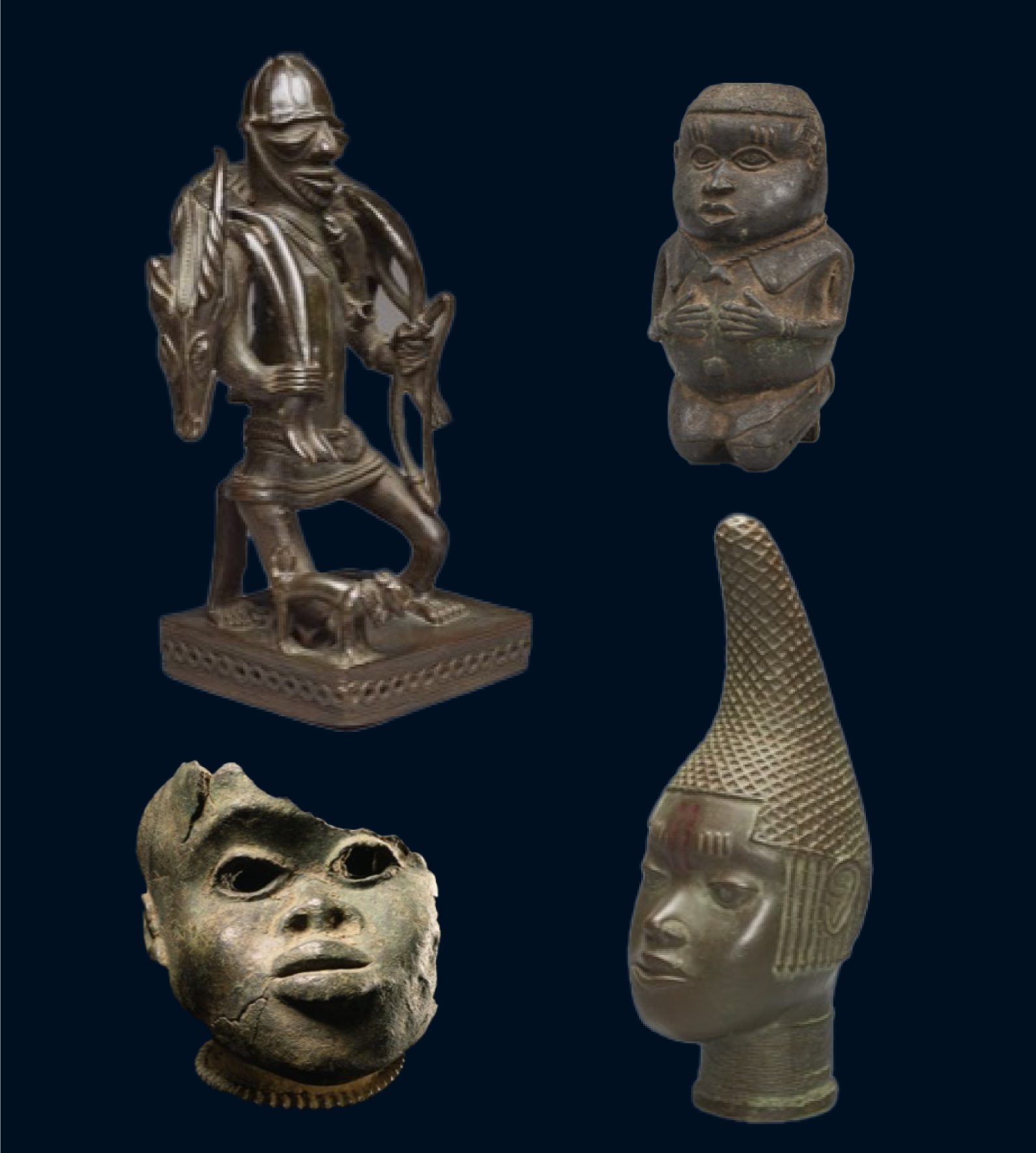Let’s set the stage:
In my last two years of high school, I took an advanced art class and chose Nigerian musical instruments as the subject of my work. With over 200 languages and their associated cultures in Nigeria, this is a very broad field. I thought that would give me ample opportunities to observe traditional instruments up close and in use. In post-colonial Nigeria, where many traditions were dying out, I struggled to find most instruments. I had to rely on online images of instruments held by Western museums that I couldn’t afford to visit.
Benin (Edo in the indigenous language) is not a static fragment of Nigerian history. The descendants of the creators, owners, and users of the cultural artifacts I am interested in are still members of the Kingdom of Benin.
Benin Bronzes: a term used to describe thousands of items stolen from the palace of the Oba (king) of Benin in February 1897 during the British Punitive (Colonial) Expedition to (Military Campaign on) Benin. They are the spoils of war.

Benin Bronzes Ownership
2023
Before he handed over the highest political seat, former President Buhari passed ownership of all Benin Bronzes that will be returned to Nigeria from the Federal Government to the Oba (King) of Benin. This sent shockwaves through the museums that previously pledged to return the cultural artifacts, stalling the most successful attempt at returning the largest amount of these artifacts to date. It is important to note that the cultural artifacts referred to as the Benin Bronzes were mainly taken from the king’s palace when the British colonial forces ransacked the capital. Technically, they were stolen from the current king’s ancestors and are the property of the Royal Court and its artisans.

A New Home
2020
The Edo Museum of West African Art is announced as the new home for all the returned Edo cultural artifacts. The winning design by David Adjaye is still yet to be built. It operates online as though it is up and running already. Limited information is available about the progress of the institution.

The Spoils of War
1897
The British Punitive [Colonial] Expedition to [Military Campaign on] Benin, February 1897 resulted in the dispersal of cultural artifacts taken from the Oba's palace grounds. It was the climax of a war between the British colonial forces and the Kingdom of Benin, or Edo as they call themselves. All but a handful of the cultural artifacts stolen from the Kingdom of Benin were taken during this time.

Commisioning Bronze Figures
16th Century
The commissioning of bronze heads and figures in honor or a member of the royal family began in the 16th century, when one of the Obas commisioned the artisan guilds to make an image of one of the queen.

The Dawn of an Empire
11th Century
The Kingodm of Benin, which we can also refer to as the Edo Kingdom and the Benin Empire, was birthed from the Igodomigodo kingdom, which was also founded by the Edo peope. Arriọba ẹdo, as it is called in the indigenous Bini language, was "one of the oldest and most developed states in the coastal hinterland of West Africa" before the greed of the British Imperial state tried to wipe it from existence in 1897 (Strayer, 2013, Ways of the World).